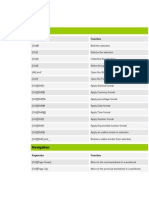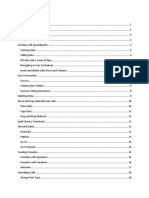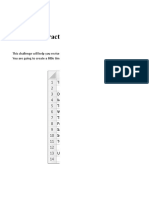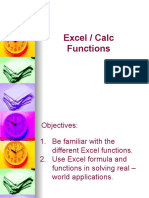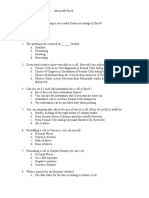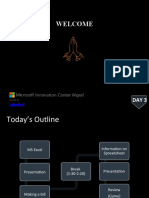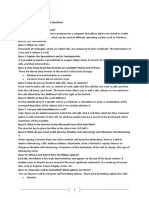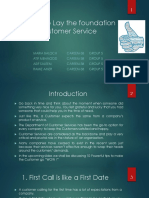0% found this document useful (0 votes)
193 views10 pagesA Review of Excel Basics Exercises
This document provides exercises to practice Excel basics skills including naming ranges, formatting cells, basic editing such as filling and copying formulas, and creating basic formulas and charts. There are 25 exercises divided into sections on naming ranges, formatting, basic editing, formulas, data tables, and charting. The exercises provide step-by-step instructions to practice and reinforce essential Excel skills.
Uploaded by
VinceCopyright
© © All Rights Reserved
We take content rights seriously. If you suspect this is your content, claim it here.
Available Formats
Download as XLS, PDF, TXT or read online on Scribd
0% found this document useful (0 votes)
193 views10 pagesA Review of Excel Basics Exercises
This document provides exercises to practice Excel basics skills including naming ranges, formatting cells, basic editing such as filling and copying formulas, and creating basic formulas and charts. There are 25 exercises divided into sections on naming ranges, formatting, basic editing, formulas, data tables, and charting. The exercises provide step-by-step instructions to practice and reinforce essential Excel skills.
Uploaded by
VinceCopyright
© © All Rights Reserved
We take content rights seriously. If you suspect this is your content, claim it here.
Available Formats
Download as XLS, PDF, TXT or read online on Scribd
/ 10










